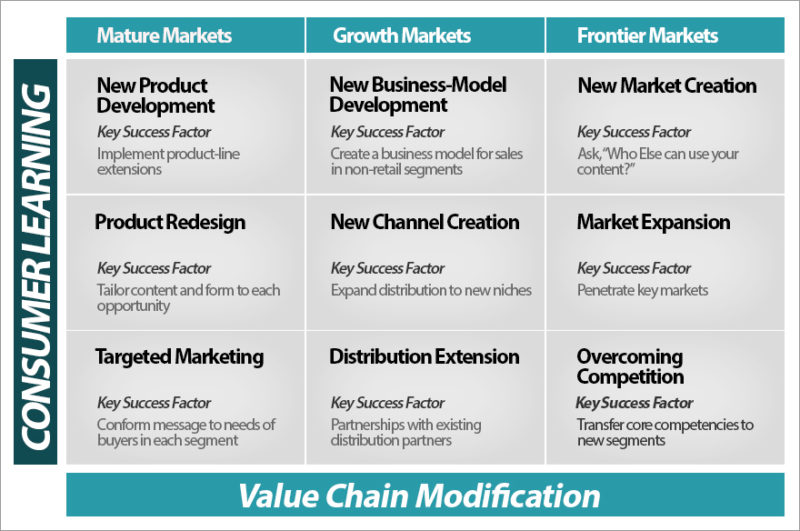
- June 6, 2020 - 
How to Increase Book Sales? – 9 Creative Strategies to Do It!
A key challenge to growing your publishing firm and how to increase book sales is to find new paths to greater revenue by building upon your core strengths without making a radical shift in the way you currently do business.
This article explains nine strategies and creative ideas on how to increase book sales, revenue and, profits using existing (or sometimes new) content in current markets, growth markets and new, “Frontier” markets.
There are ways in which you can build a steady flow of revenue and profits to help your business reach significant long-term value – as you expand your comfort zone.
# Marketing Strategies for Mature Markets
These strategies provide opportunities to hit short-term sales targets.
#1 Targeted marketing. Different groups of people can profit in unique ways from using your content. Communicate directly with buyers to remind or inform them of how well the information in your book can benefit them in some way.
#2 Product redesign. You may need to enhance your product to meet additional needs and boost the overall value proposition. That might entail changing the delivery of your information to an ebook, booklet or a seminar.
#3 New product development. If sales of your current product line languish, you may need to replace exiting titles or extend your product line.
Line extensions can be made into one category (Chicken Soup for the Soul books), or into several categories such as Weight-Watchers services, books, magazines and foods.
# Marketing Strategies for Growth Markets
Some market segments offer long-term opportunities to increase category revenue and capture market share. These strategies require moderate buyer education and value-chain modifications.
#4 Distribution extension. Instead of distributing your books only to bookstores, expand your distribution to other retail outlets such as airport stores, supermarkets and specialty retailers. Your existing trade distributor may already have access to these outlets, so your objective becomes harnessing existing non-traditional channels that can quickly and easily reach more consumers where they shop.
#5 New channel creation. If you do not have trade distribution or if your distributor does not reach non-traditional markets, your objective becomes building parallel distribution and sales channels to penetrate new segments. This might entail partnering with a library wholesaler, finding sales representatives calling on gift shops or selling through book clubs, catalogs, display-marketing companies or home-shopping networks.
#6 New business-model development. Some publishers sell exclusively through bookstores (bricks and clicks). Distribution discounts, returns and mass-market promotion can reduce profits significantly. In addition, seek sales to non-retail buyers such as those in corporations, associations and government agencies.
Since there is no existing distribution to these segments your business model must be adapted to sell directly to these buyers.
# Marketing strategies for frontier markets provide long-term opportunities to drive revenue growth in new segments. Consumer education may be necessary, plus you may need new distribution partners.
#7 Overcome competition. It may be difficult to go head-to-head with a market leader in a new niche based on content or price. Employ a “flanker” strategy by creating a unique value proposition, or through brand or author extensions.
#8 Market expansion. You may be adequately serving a segment now, but there could be ways to mine additional sales in the same segment. If you are selling to college bookstores, you could penetrate that niche further with sales to instructors, students, alumni associations or personal presentations. Similarly, if you are selling to public libraries you may be able to increase your revenue with sales to children’s, hospital, prison or school libraries.
#9 New market creation. Focus on your content and how others might benefit from using it.
If your content is about helping people find employment, you could reach buyers through state departments of labor, college career-placement offices, high-school counselors, recruiters, parents’ groups or even internationally.
These examples are intended to stimulate your creative thinking.
They are not mutually exclusive so you may adopt several opportunities simultaneously. Take a portfolio approach to your business, implementing each concept as it fits your skills, mission, manageability and potential for return.
The chart below depicts how these strategies on how to increase book sales can work together to create greater long-term value for your publishing company.
An Opportunity Map With Nine Marketing Strategies for Profitable Long-Term Growth


